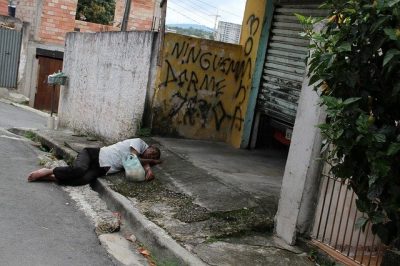In Times of COVID-19, Black People Die Twice in Brazil

Leonardo Sakamoto reflects on the police killing of João Pedro Matos Pinto, a 14-year-old black boy, and one of many Brazilian George Floyds.
***
João Pedro Matos Pinto was a 14-year-old black boy. On 18 May, he was playing with his cousins when the house in São Gonçalo, Rio de Janeiro state, was invaded by police. He was killed by a rifle shot that pierced his body from stomach to shoulder. The police claimed they were chasing suspects, but his family say the story is false. Community leaders counted 72 bullet holes in the house. João’s father said he only got good marks at school.
João Pedro is one of the many Brazilian George Floyds.
Black people accounted for 55 per cent of the country’s population, but more than 75 per cent of those killed in police operations between 2017 and 2018, according to the 2019 Yearbook of the Brazilian Public Safety Forum. Whites are around 44 per cent of the population but account for less than a quarter of victims of police killings. In Rio de Janeiro, black 21-year-olds are 147 per cent more likely to be killed by police than the rest of the population.
At the same time, the majority of Brazilians killed by Covid-19 are black. A survey commissioned by Épocamagazine shows that 61 per cent of the 54,488 victims who had died of the disease by the end of June, and whose race was identified, were black.
The problem is not genetic. It is related to lack of basic sanitation, food insecurity and difficulty in accessing medical care. Poverty is not colour-blind. By being more lethal to black and poor people, the pandemic parallels police violence statistics in cities like Rio de Janeiro.
There are no direct government orders to shoot black and poor people. But security forces are trained to defend the property and quality of life of those who live in the ‘postcard’ parts of major Brazilian cities while ‘containing’ those who don’t. Rio de Janeiro Governor Wilson Witzel and President Jair Bolsonaro openly advocate that officers should not be held accountable for killings during police operations. This encourages them to shoot first and ask questions later.
Before the pandemic, Brazil’s black and poor population were already experiencing a massacre in the suburbs at the hands of drug traffickers and paramilitaries, as well as official police and military forces. Covid-19 made things worse, helped by Bolsonaro’s denial of its danger and lack of public policy responses to it.
This fits perfectly with what Cameroonian philosopher Achille Mbembe calls ‘necropolitics’ – where a government believes it can decide who lives and who dies. In Brazil, the government not only believes this; it actually makes those decisions.
Two days after João Pedro’s death, an 18-year-old black man called João Vitor was killed by police in Rio’s City of God – a district world famous for the movie of that name.
It happened while volunteers were distributing food to alleviate the suffering caused by Covid-19. The police accuse the dead young man of being a criminal. But he will never be able to tell his version of events.
Following these cases, Brazil’s Supreme Court banned police operations in favelas during the pandemic. But videos show that poor blacks are still victims of police brutality, leaving no doubt that there is a long way to go in the fight against the structural racism that defines us as a nation.
*
Note to readers: please click the share buttons above or below. Forward this article to your email lists. Crosspost on your blog site, internet forums. etc.
Leonardo Sakamoto is a journalist, political scientist, director of Repórter Brasil and UN adviser.
Featured image: A man takes rest on the roadside in a Carapicuiba City favela. Image by Luiz Gonzaga De Souza/Pixabay

